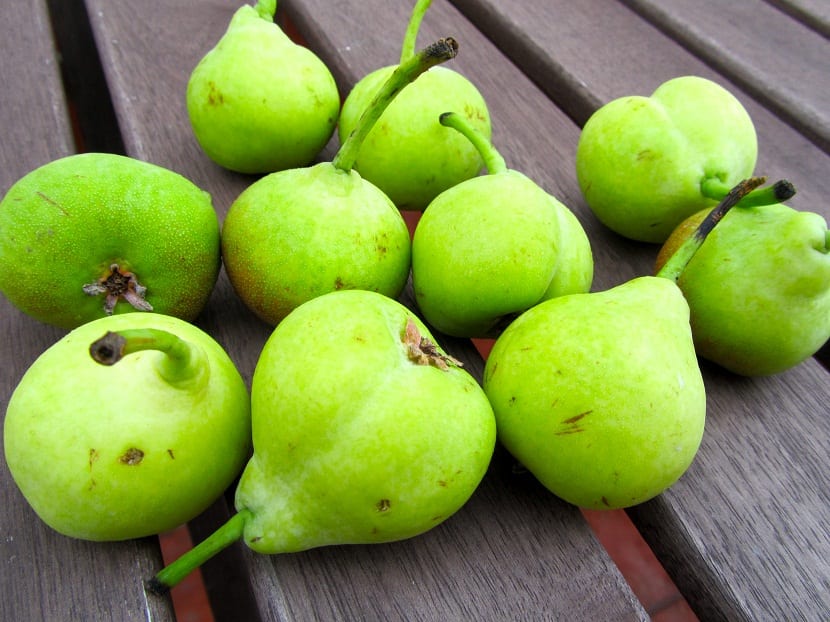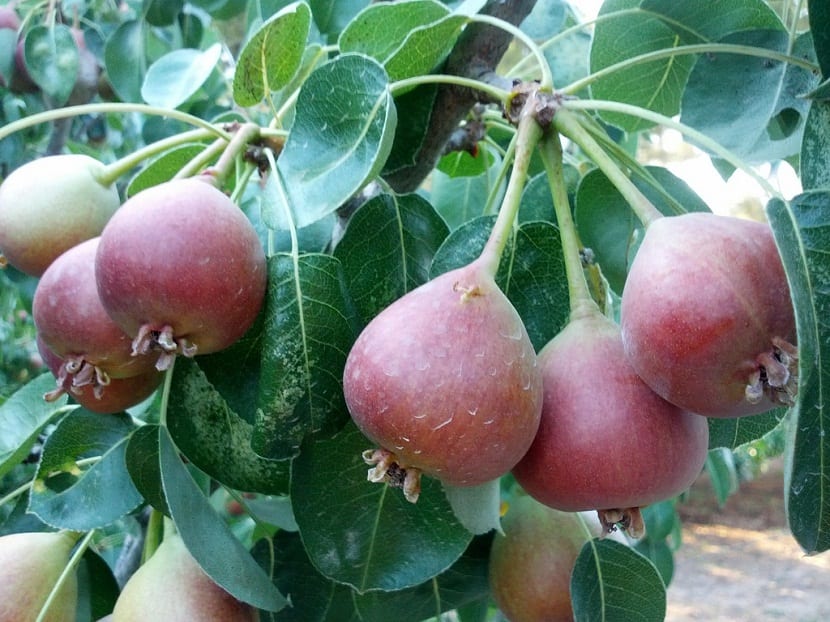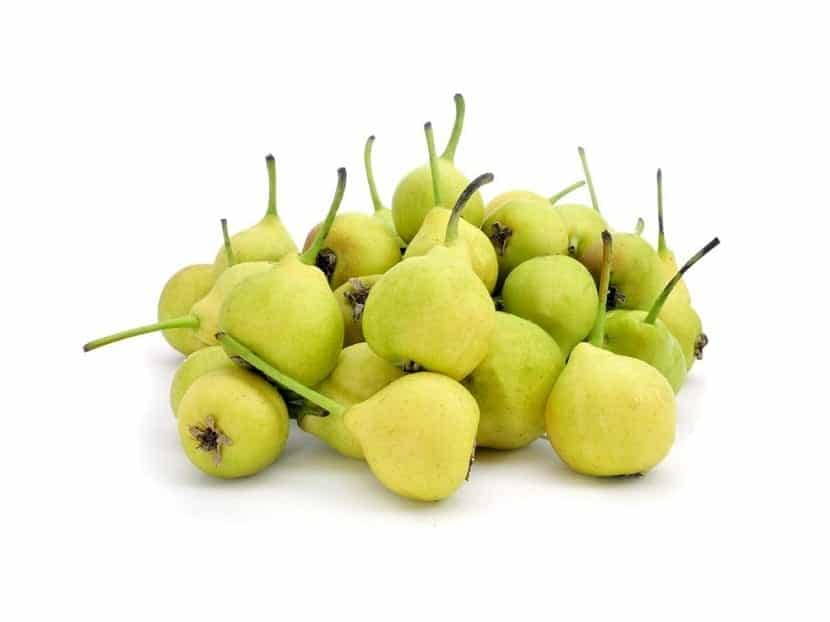
All the San Juan pears known by the scientific name by Pyrus communis and with the common name of peras sanjuaneras or peritas de las reina, it is a plant that has its origin in the Spanish Levante and also in Mallorca, although not enough information has been obtained regarding the latter.
This is a tree of the fruit class that is perfect for Mediterranean gardensEither medium or small, and one of its main characteristics is that it produces tiny pears that have a delicious flavor and are very juicy.
Features

It is a tree that can grow to eight feet tall approximately and with an average width of two and a half meters. Its flowering occurs in the last days of March, it can even be a little earlier. The pears of this tree are given that name because their collection begins practically on the date close to the celebration of San Juan. This is a fruit that is found in the Mediterranean diet.
They are pears that ripen quite quickly, but it is recommended that they be stored frozen. When the fruit is picked and when it is still a little green, its flavor can be bittersweet, since generally when they are ripe their flavor is quite sweet and with a lot of juice.
The color of this pear is greenish on the outside with some shades of yellow and a few reddish spots. Its skin is quite thin and crisp. It is a pear with a firm flesh.
Cultivation of San Juan pears
This is a pear tree that can be sown on any day of the year With the exception of winter, however, the best time for sowing is in the fall, since this makes rooting much easier before the winter months arrive.
To sow it in the spring or in the summer Irrigation must be carried out on a regular basis, especially at the beginning. It can be adapted to almost any terrain, but it is important to avoid soils that are too calcareous, as it can cause serious damage to the plant. Ideally, the soil is clayey and with a lot of humus. It is recommended that an amendment be made with a little peat, manure and mulch before starting sowing.
Care
This is a pear tree that can be had very quietly in a garden, since no special care is required, with a little pruning and with very little amount of water for irrigation, it is usually enough, since it is a practically dry tree.
Like any other pear tree, it is necessary to make an occasional spike, remembering to leave a bearing that is open branches. Irrigation, as mentioned above, has to be done sparingly, being completely suspended in the winter months. With the arrival to the month of March and thereafter, watering must be done once a month.
Plagues and diseases

Mites- Cause dark, deep red, or brown spots.
San Jose louse: causes damage to pears reducing their commercialization. It usually causes purple spots on the leaves or on the nerves of the leaves, with red bites on the fruits.
Pear Psila: it differs from the rest of the pests because it has an appearance similar to that of a lobster in its adult stage. It can be seen as a kind of sticky substance on the leaves of the plant, since it originates from honeydew that nymphs usually excrete.
Fruitfly: this is an insect that causes serious damage to the fruits due to the bite of the females. It causes holes that usually turn yellow or brown.
royal pear tree: reddish spots are observed on the leaves, causing them to dry out and then fall off. Dark spots appear on the fruit, causing it to necrosis.
Follow us and discover more about this fruit and others.